TRAVEL | It comes in threes: The waterfalls of San Salvador, Luisiana, Laguna (Part 2: Hulugan Falls)
This is the last of two parts.
A closeup of the upper part of Hulugan Falls.
After sweating it out to get to Talay Falls and Hidden Falls, we were ready to see the pride of San Salvador, Luisiana--the more than 200-foot high Hulugan Falls.
The trek
We traced our way back to about a quarter of the trail to the first two waterfalls and came back to a clearing before diverting to a different route. The clearing is said to be a camping ground for those who wish to stay overnight. According to the barangay captain, they purposely designated a campsite that was far enough from the falls to prevent littering as well as for safety reasons.
The trail took us through gigantic pandan (screwpine) plants that are several feet tall. Or should I call them trees already because of their height? The pandan I know are much smaller, so seeing this variety was a pleasant surprise. Pandan, by the way, is one of Luisiana's agricultural products.
The designated campsite, with pandan "trees" in the distance. For scale, just compare them with the shack near the photo's center.
Our trek continued for about 30 minutes, mostly in a seemingly endless descent. The trail was mostly soil, so I can imagine it being slippery during the rainy months. Whoever said that following this route was much easier is a liar. Looking at the bright side, it was good exercise, though.
Hulugan Falls
Soon enough we could hear the sound of water and of people. And there it was, the towering Hulugan Falls.
First glimpse of Hulugan Falls.
Towering above everyone else. Compared to most waterfalls in the country, Hulugan is seriously tall.
I'll have to admit I was a tad disappointed to see that it wasn't as mighty as I hoped it would be. I know the amount of water could be a lot less during summer but I just wasn't expecting it to be like this less. Instead of powerful gushes, it was thin curtains of water falling that seem to disappear long before they even hit the pool below.
But to be fair, Hulugan Falls was still beautiful despite the extreme lack of water volume. For one I came to appreciate the fantastic rock formations that would have otherwise been completely covered with water. The overhang was now totally exposed and it was awesome seeing its many "wrinkles," carved out by nothing but water.
Because of the waterfall's rather mellow state, visitors were now able to go right under it to enjoy its showers and swim in the plunge pool without fear of getting sucked in by the undercurrent. As with Talay Falls, Hulugan's pool isn't like Kawasan Falls's unbelievably light blue pool owing to the volcanic nature of its rocks.
Potholes
What Kawasan doesn't have, though, are a scattering of potholes, some of which are big enough to call your own personal pool. Think of them as jacuzzis sans the water propulsion. It's just amazing to think of how turbulent the water must have been to create whirlpools with such massive force enough to drill out these holes out of the bedrock.
There's also a handful of them that are very shallow where you can lie down half-submerged while simply staring at the waterfall. And then there are smaller ones you need to watch out for lest you hurt yourself. This can be especially tricky if everything's covered in flowing water. Mind you, some of them are quite deep. And it doesn't help that the rocks are very slippery, so be careful.
This rock formation reminds me of snow ice. Dessert, anyone?
I love the contrast between the dark rocks and the bright green foliage.
Boulders and rock formations
They may literally just be on the sidelines but the surrounding slopes and rock formations are also worth anyone's appreciation. There are dark-hued rocks jutting out from a covering of foliage that will both elicit awe from their sheer beauty and fear that they could just fall on you anytime. As if to remind you that such fear is not at all unfounded, you'll find gargantuan slabs of rock and boulders right at the waterfall's base that have obviously been eroded from the mountain.
How these gigantic boulders came to rest in their current spots is but proof of nature's might.
Just look at how these boulders and slabs of rock easily dwarf us, humans. On the bottom right you'll see one of those potholes I mentioned earlier.
To the left of the waterfall (while facing it) are sheets of rock neatly layered in a seemingly snow ice-like fashion (yes, the dessert) and hanging ominously over a large but shallow cave. I'm no geologist but I'd like to posit that this could have been an ancient waterfall, that this shallow cave is actually a rock shelter carved from the resulting undercutting from the constant barrage of receding water around the drop.
Speaking of caves, there's another depression high above the cliff to the waterfall's right. It's not readily accessible to most visitors but it looks quite intriguing even from my camera's zoom lens.
Methinks this spot used to be an ancient waterfall and that cave was carved out from the repeated force of water splashing and pushing back.
Another shallow cave but this one's high above and away from most people's reach.
The closest closeup of the cave that I could get out of my lens.
We were the last ones to leave the place, so we got to enjoy a few more moments with no other people around. But the encroaching darkness soon forced us to get going and brave the steep climb back up. This is the same trail used if it's only Hulugan Falls you want to visit. Even if they've carved out steps and installed bamboo railings to make it a little easier for visitors, it's still labeled as difficult simply because it's steep.
Finally, a few moments of Hulugan Falls all to ourselves!
Even at only a few minutes past four, the place was already fast becoming dark. Time to leave.
With our guide, Janet.
Drenched in sweat from the steep uphill trek, here we are now waiting for our tricycle ride.
Gaga over bibingka
Back at the barangay captain's house we gorged on one of the best-tasting bibingka (rice cake) I have ever had. Ever! Mind you, we already brought along some to our trek and so this was our second serving already. It was that good for me.
San Salvador's version (and probably of the whole of Luisiana) is a tad thinner than the usual bibingka and has strips of fresh buko (coconut) in it, making it delectably moist and which probably spells all the difference. It's topped with margarine and grated cheese for added delight. A pack of three costs Php 100 and comes in a cute little basket woven out of pandan leaves.
Bibingka goodness.
One of the best-tasting bibingka I've ever had, if not the best.
Just like San Salvador's waterfalls, the bibingka comes in threes in this cute little basket.
Bonus: A cat!
Yes, I was charmed yet again by a feline. For the life of me I forgot her name but her hoomans are the barangay captain's family. She's so squeaky clean and has this regal bearing that's so endearing. And she sports a Padre Pio scapular for crying out loud!
"Bananas, anyone? I'm selling bananas."
She was perpetually in this alert mode that she would hardly budge. 😻
Pensive duo.
I just love it when I get to interact with cats or dogs in my travels. Don't you?
In hindsight
Despite the minor disappointment due to the waterfall's weak water volume, there's no denying that Hulugan Falls is still one hell of a waterfall, lording over everything else at 200-plus feet high. It is particularly tall for a waterfall in this country and that alone is reason to go see it. Together with the surrounding landscape and the side trips to Talay Falls and Hidden Falls, this entire experience, however tiring, was all worth it.
And don't forget to try the bibingka.
I'll be back for sure to see you in all your turbulent glory. Bye for now.
***********************
GETTING THERE:
Via public transport
Take one of those buses bound for Sta. Cruz, Laguna. There are terminals in Cubao and Taft Ave. in Makati City. It's about a 3-hour ride and the fare is >Php100 but shouldn't exceed Php150.
From Sta. Cruz take a jeepney bound for Lucena and get off at San Salvador. Your cue is a Hulugan Falls sign although it's better to just tell the driver to drop you off at the said barangay. But if you miss that, you can simply continue to the Luisiana town proper and hop on a tricycle going back.
There's an information desk right next to the barangay police headquarters where you'll be assigned a guide and who'll ride along with you in your tricycle to the barangay captain's house for registration. From here it's another tricycle ride to where your trek actually starts.
Via private vehicle
Take the South Luzon Expressway (SLEX) and exit at Calamba. Continue driving through the National Highway (although there's a diversion road so you can skip the traffic at the Calamba town proper). You'll pass by Pansol, Los Baños, Bay, Pila, Sta. Cruz, and Pagsanjan.
Once you reach the Pagsanjan church, turn right and continue driving towards Cavinti but don't go all the way to the town proper. There's a fork before you reach town; turn right and stay on the Cavinti-Luisiana Road. Look out for a Hulugan Falls roadside sign. Turn right and you'll immediately see an information desk right next to the barangay police headquarters.
Or you can simply use Google Maps. It was pretty accurate based on our experience anyway.
At the information desk you'll be assigned a guide who'll ride along with you to the barangay captain's house for registration. From here it's only tricycles going to where your trek actually starts. You can leave your car at a designated parking space near the barangay captain's house.
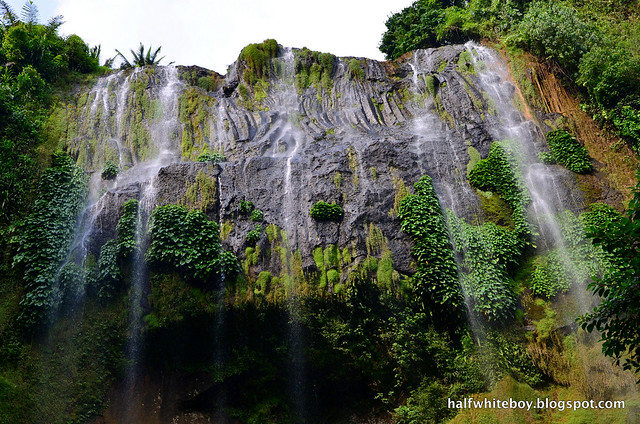
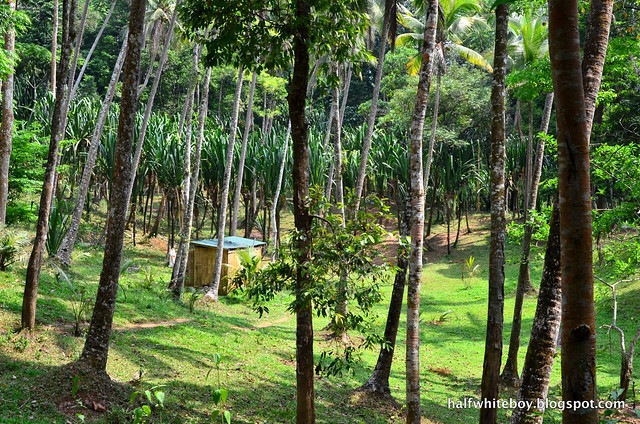
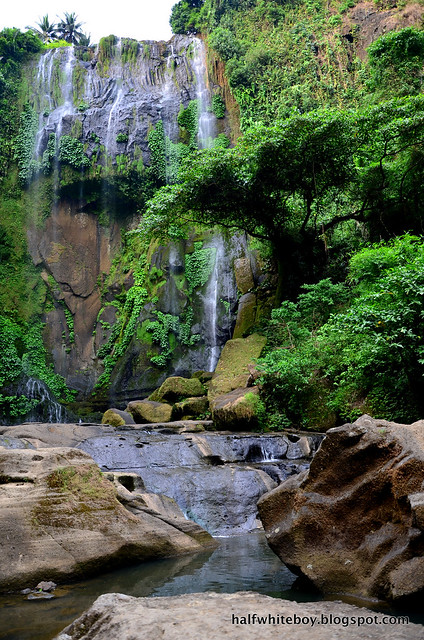
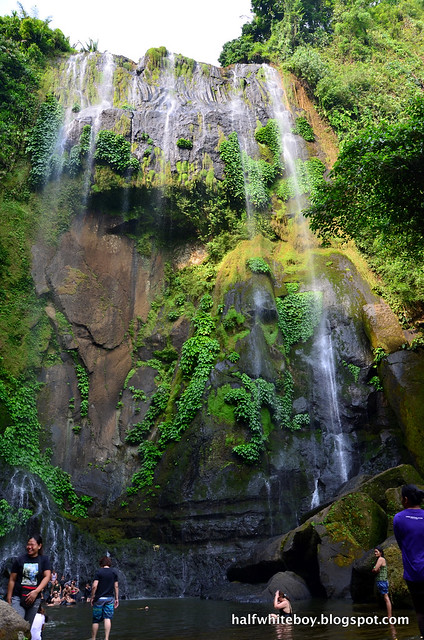
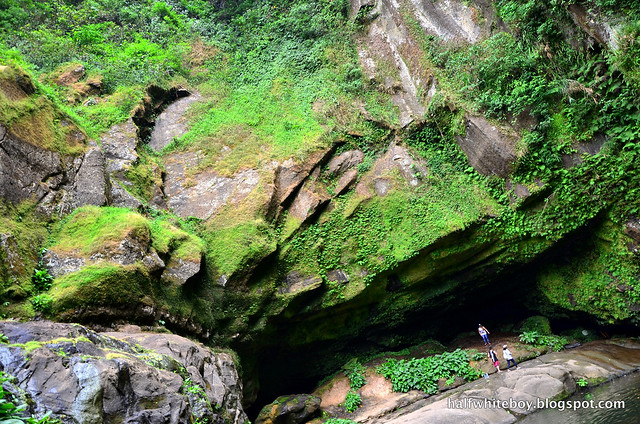
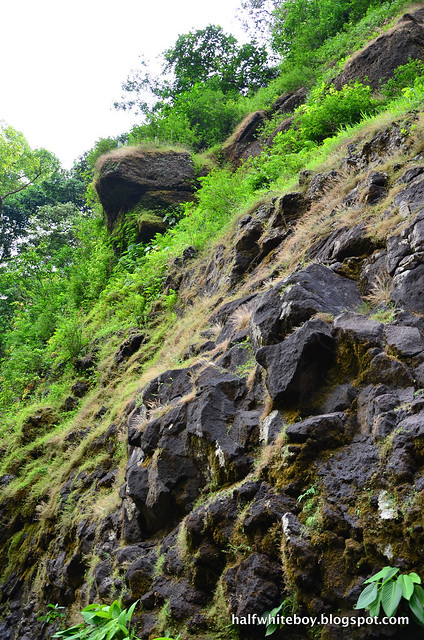
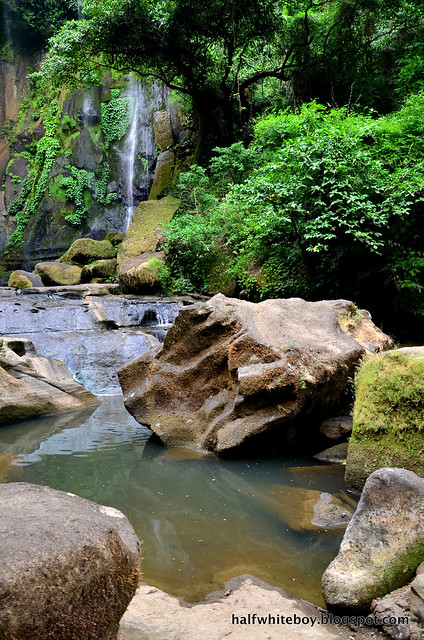
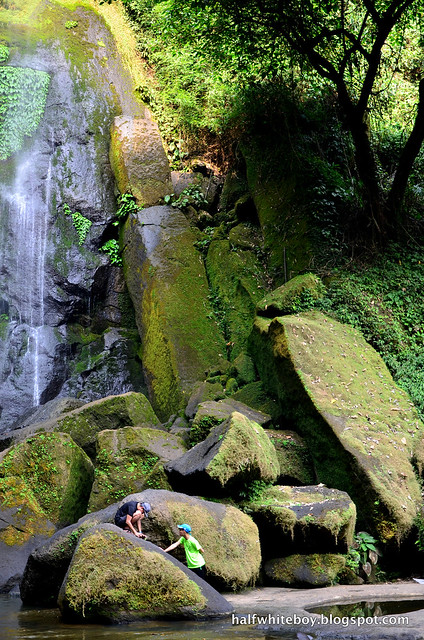
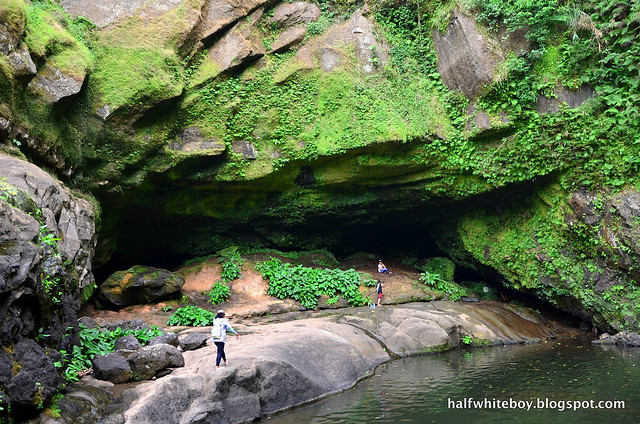
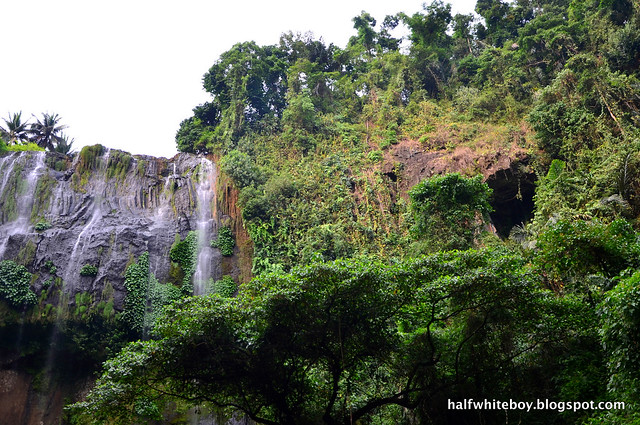
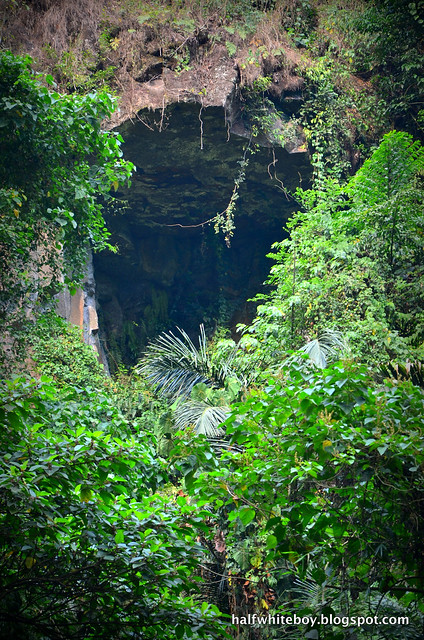
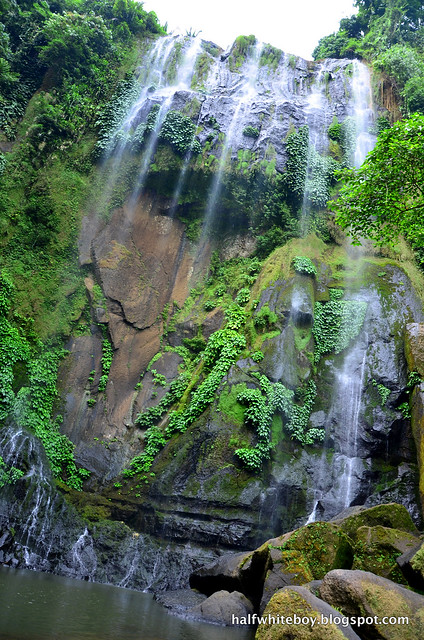
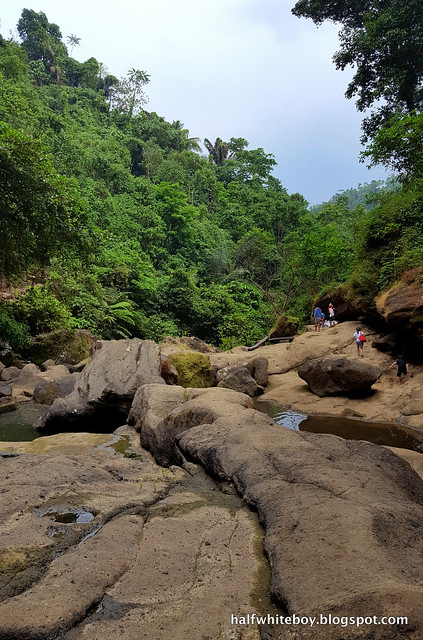
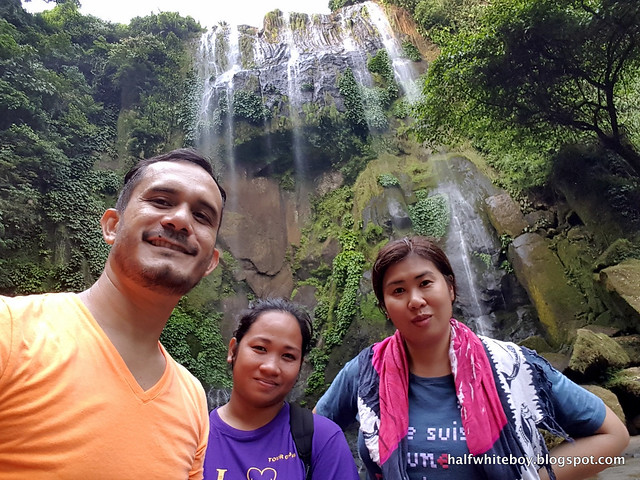
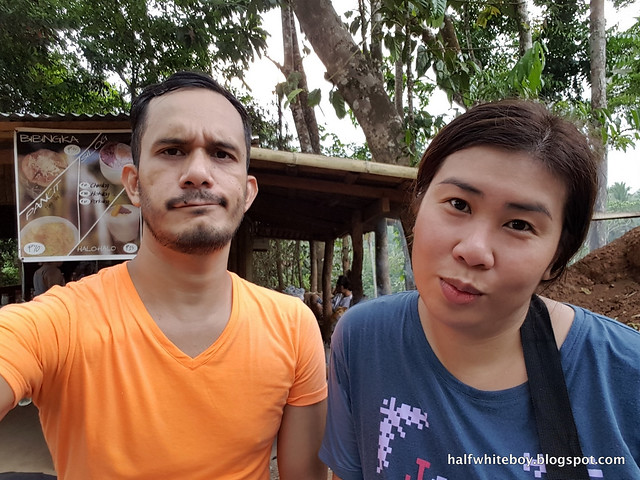
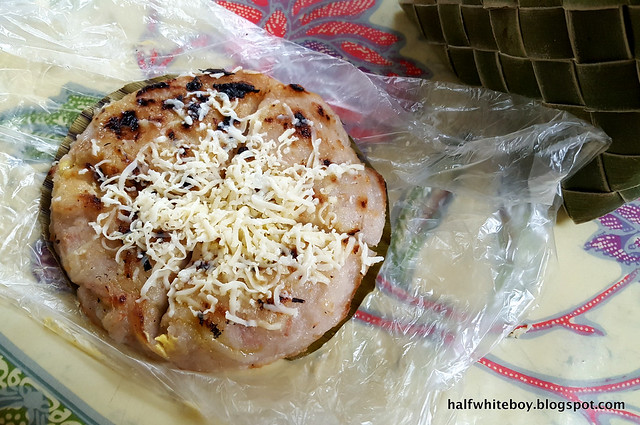
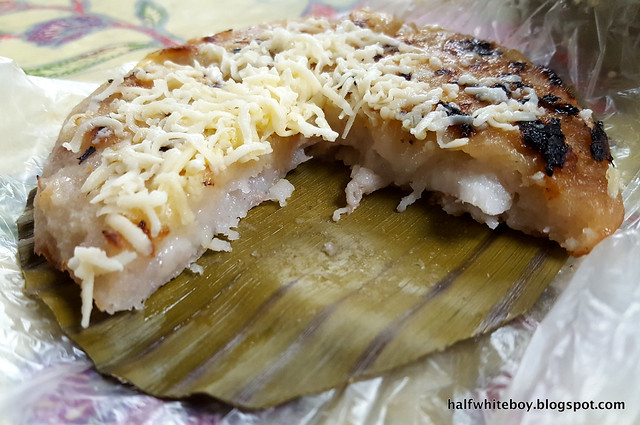
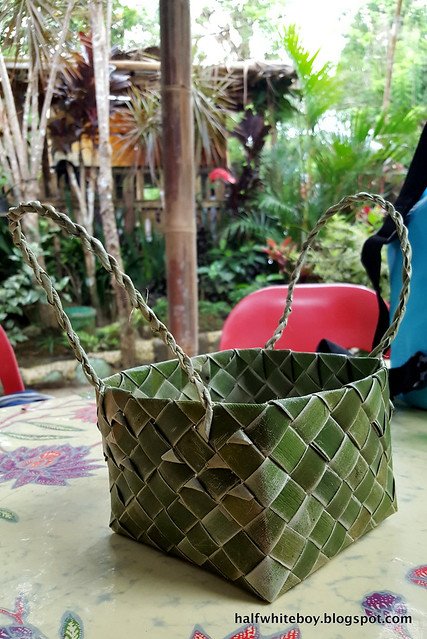
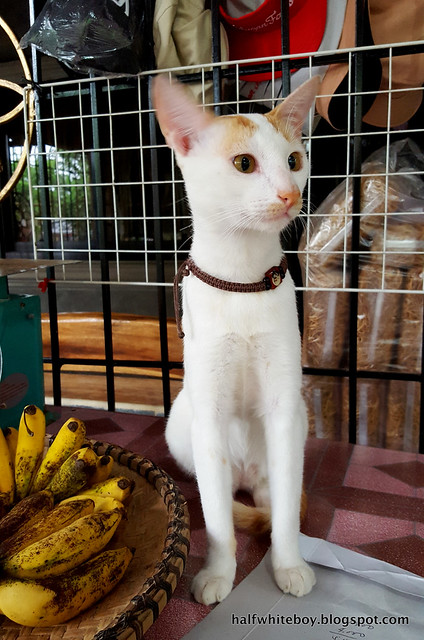
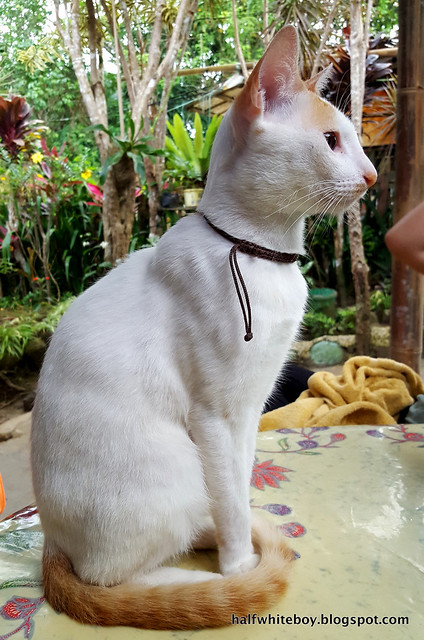
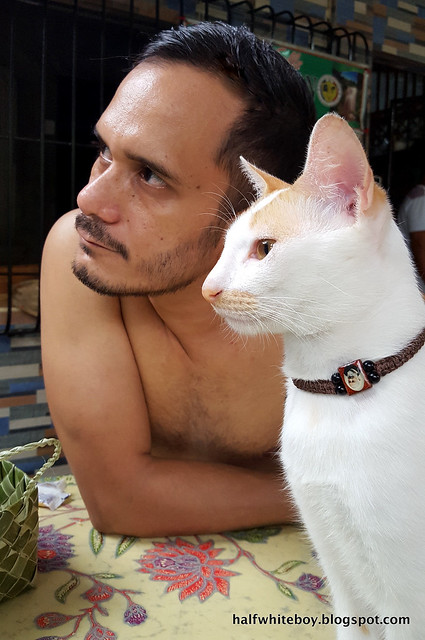
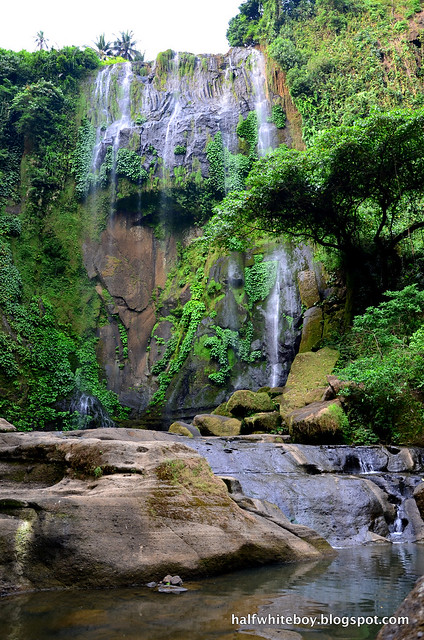
wow
ReplyDeleteThis is amazing! that's why Laguna is perfect getaway for weekends. Thanks for sharing!
ReplyDelete